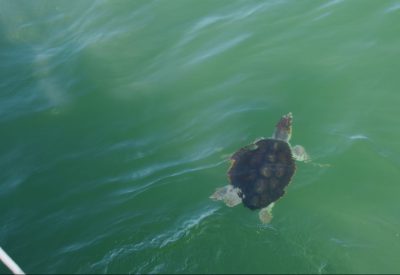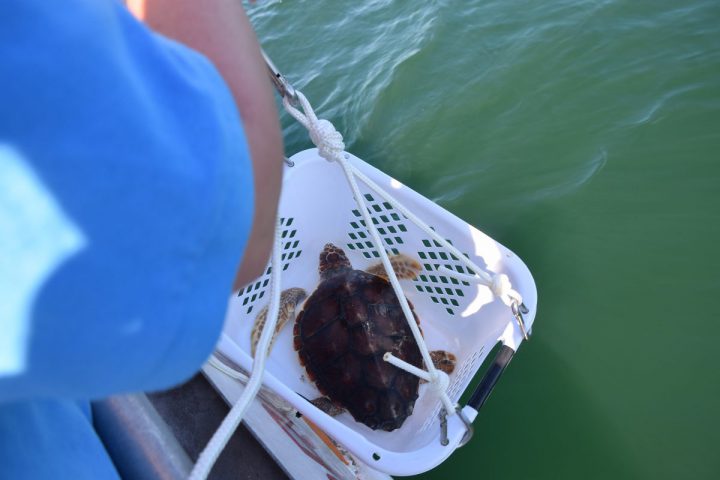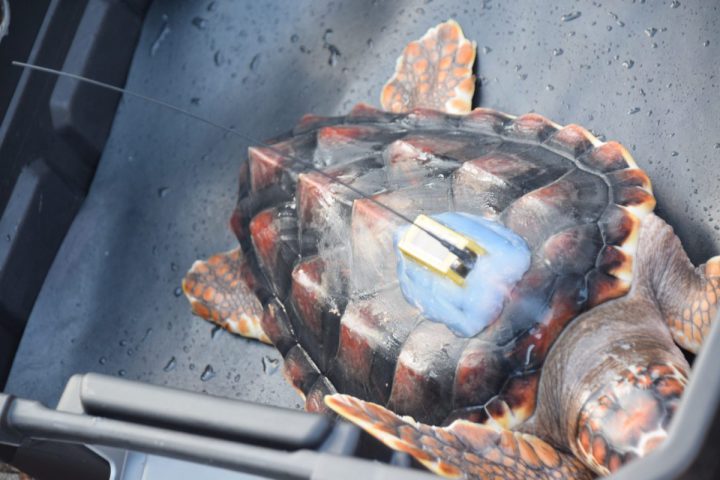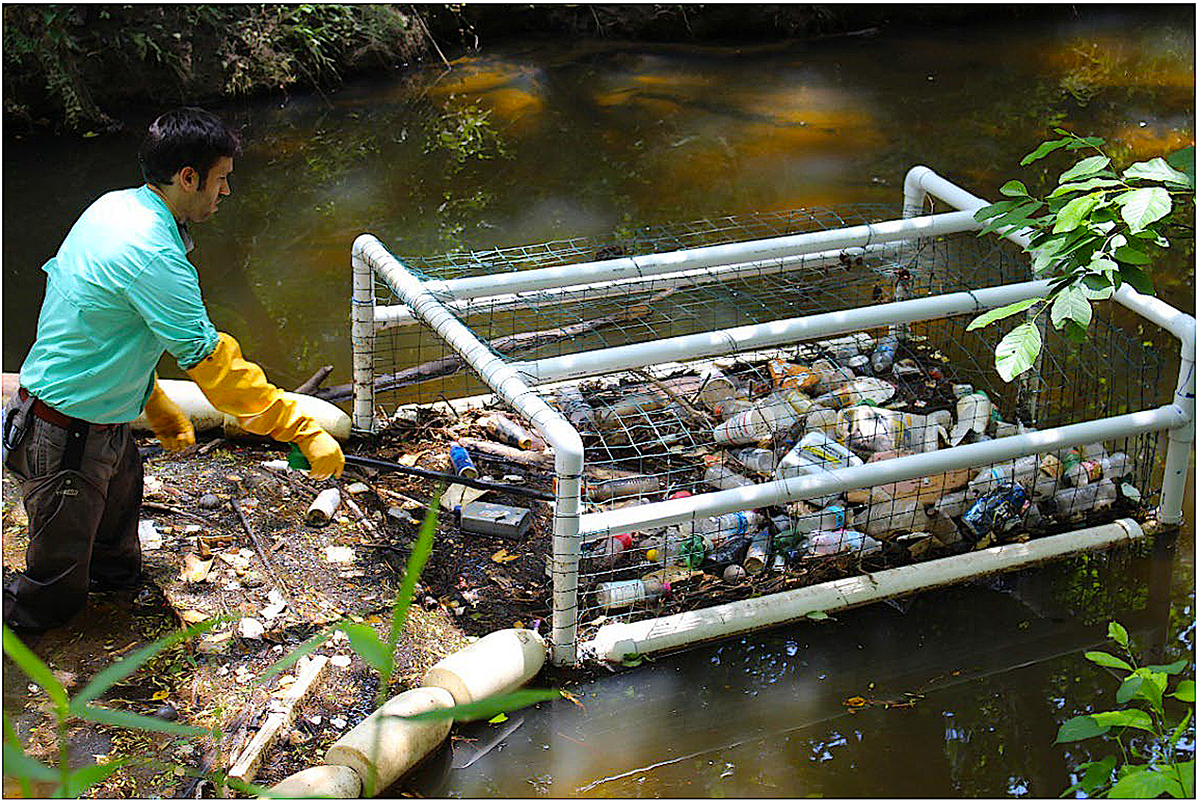
MOREHEAD CITY- Sea turtle enthusiasts traveled more than 20 miles offshore Wednesday to witness the release of rehabilitated juvenile sea turtles into the Atlantic Ocean.
The 33 turtles, all loggerheads, began their lives on one of North Carolina’s beaches injured, sick or weak. They were nursed back to health and released by the staff of the North Carolina Aquarium at Pine Knoll Shores. Loggerhead sea turtles are listed as threatened under the Endangered Species Act.
Supporter Spotlight

20 staff members and 50 attendees met at the Carolina Princess dock in Morehead City to embark on the two-hour trip aboard the 95-foot headboat to reach a location 22 miles off the coast.
One attendee, Corinne Everett Belch of New Bern, said she wanted to go on the trip to participate in something the aquarium was doing for the good of the environment.
“I’m excited to go out and definitely see the sea turtles swim away,” she said. “I like the idea of seeing their first taste of freedom.”
Among the turtles released this week were 20 hatchlings that had been rescued during the summer, some only a few weeks old. Many were found weak, struggling at the bottom of their nests, or sick and washed up on a beach.
The remaining 13 turtles range in age from a year to 2 years old. Four of them were loaned to partner aquariums, the National Aquarium in Maryland, the Mystic Aquarium in Connecticut, the Newport Aquarium in Kentucky and Adventure Aquarium in New Jersey, for educational purposes. The remaining yearling turtles were given to and rehabilitated by the aquariums throughout the year.
Supporter Spotlight
Aquarium officials invited the public — for a $100 fee — to join 20 aquarium employees and volunteers, including representatives from visiting aquariums, and reporters to witness the release.

Michele Lamping, an aquarist at the North Carolina Aquarium at Pine Knoll Shores who took care of the turtles, said there had been public demand to watch the releases. But meeting the demand had been difficult because of time, temperature and location requirements. For the last two years, however, she said the aquarium has responded by offering the opportunity to a limited number of interested people.
“The only way to do that is to take the public with us offshore,” Lamping said.
During the release, staff members placed the turtles into laundry baskets and then slowly lowered each basket into the water. As the basket was submerged, the turtles glided out.

Most turtles shot straight out to the water, quickly darting away until they were nearly out of sight. One released turtle, however, swam back toward the boat, prompting shouts of “it’s coming back!” from adults and children alike. This turtle eventually made its way as well.
The aquarium released the turtles at sea rather than on the beach in order to give them the best shot at survival. Baby turtles are naturally born with a yolk sac that provides them enough energy to get to the warmer parts of the Gulf Stream current to find areas where their food, namely small fish that live in sea weed, is plentiful. However, once the aquarium has had the turtles for a few days, this yolk sac dries up and is no longer viable. In order to ensure that the turtles can make it to the Gulf Stream, which the turtles use to find food and travel, the staff tries to get them as close as they can by dropping them off in the ocean.
“It should be an easy swim for them to get to the Gulf Stream,” Lamping said.
Long Road to Release
Before the turtles were released into their natural habitat, they had to be nurtured back to health.
Lamping said the turtles were fed daily a healthy diet of omnivore gel food, also known as reptile treats, modified fish food and krill. In addition, turtles with injuries go through physical therapy and treatments. In order to be released, Lamping said the turtles must pass a health test from a veterinarian and must be approved for release by the state Wildlife Resources Commission.
The healthiest turtles become part of the one-year loan program with other aquariums. Those turtles were taken Thursday to the partner aquariums. Following the program, they will be released back into the Atlantic Ocean.

In a previous article, CRO reported on the first five baby sea turtles of the summer to be rescued by the North Carolina Aquarium at Pine Knoll Shores. One of these turtles was released this week and one more will remain at the aquarium where it will be fitted with a satellite tracking tag before it is released. The other three are going to other aquariums for the one-year education loan program.
All the turtles are tagged with passive integrated transponder tags that are injected under the skin and help identify and track turtles that may be found later, similar to microchips used for pets.
Lamping said she thought attendees had a good time on the trip. She said programs such as the release are important because the public can learn about the problems sea turtles face.
“The whole conservation message gets to them,” she said. “I think it’s an important way to reach people, and then those people will tell their friends and family what they did, what they learned.”







